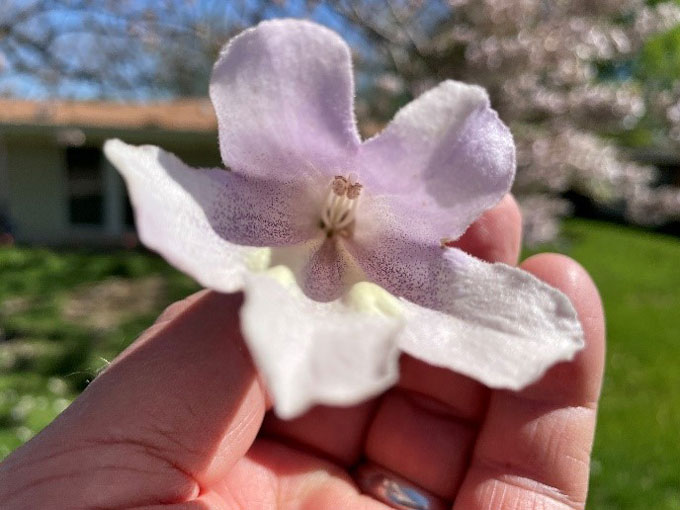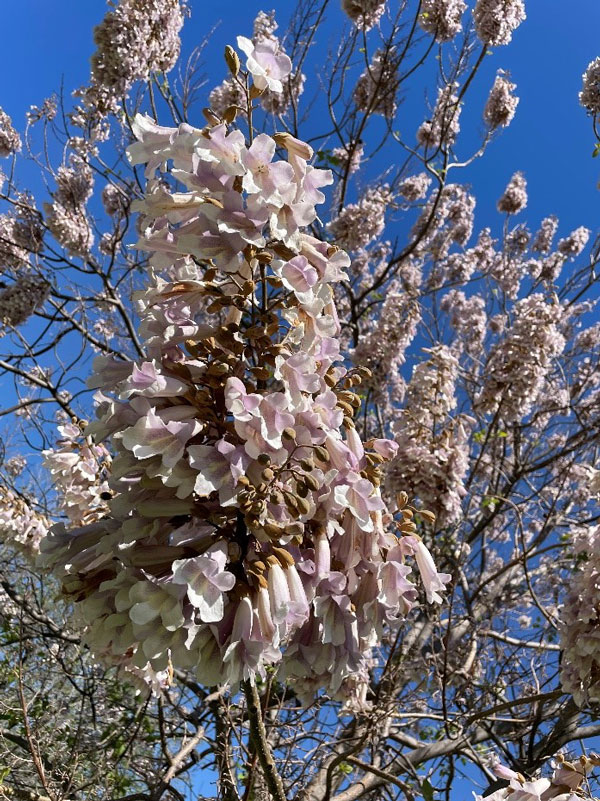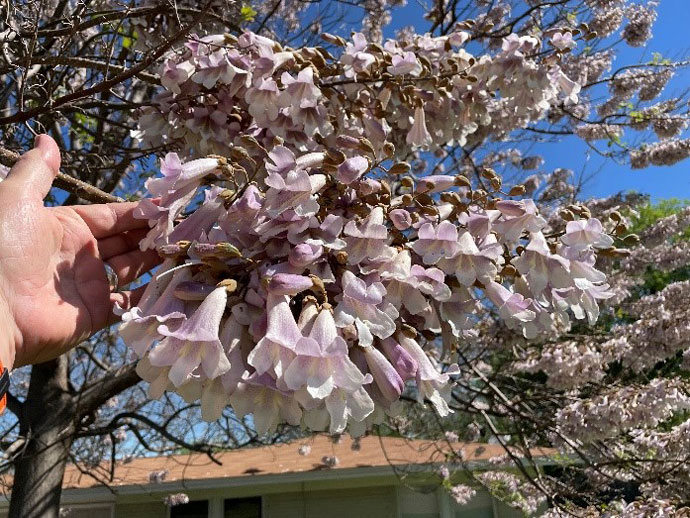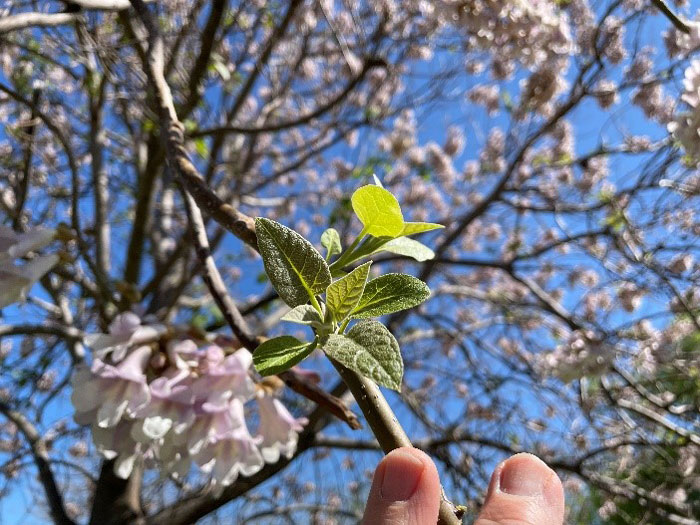Native Son: Empress Tree
So … I’m cruising down a little neighborhood street in southwest Fort Worth when I spy this tree. Not just any tree. This particular kind of tree seems to stir some folks up as much as the beans/no beans chili controversy. (For the record, I am a no beans guy, but I have to admit, the best chili I ever ate contained red beans.) Personally, I love Empress Trees (Paulownia tomentosa), but I love them the way I love elephants … beautiful, wondrous, regal beings that can do some amazing things, but I’m really not sure I want to own one myself.
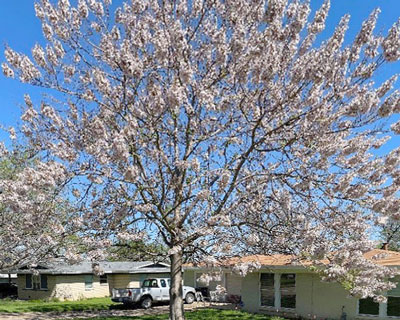
So … what’s the deal, Stevie?
It’s a little complicated, so let’s discuss this one bite at a time…
It’s beautiful! Billowy inflorescences of a dozen to perhaps 100 large individual purplish flowers are incredibly lovely, delightfully fragrant, and packed with nectar for pollinators.
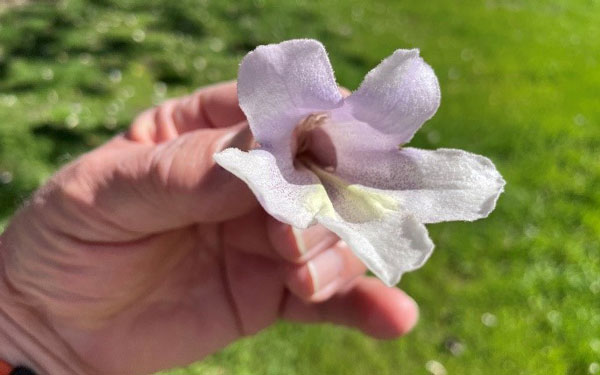
Empress Tree is hands down one of the fastest-growing trees on the planet! Ten to 15 feet of growth per year is common; 20 feet plus is possible. (My best personal experience with this phenomenon was at the Empress Tree allée at Longwood Gardens in southeast Pennsylvania. About twenty years ago, the entire allée of massive specimens (50 feet tall and wide) was removed following decline and storm damage. On a return visit ten years later, I thought I was having a Woodstock flashback … did I hallucinate that the original big trees were removed? … because there they were.
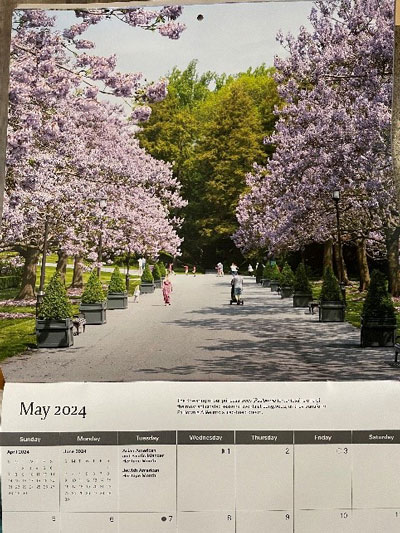
Empress Tree lumber is amazingly valuable! A single mature tree can bring up to $25,000. For centuries, the wood has been plantation grown in Asia for fine furniture, musical instruments, veneers, and recently, surfboards! Basically, the wood is strong, lightweight, straight-grained, warp and decay resistant, and easy to work.
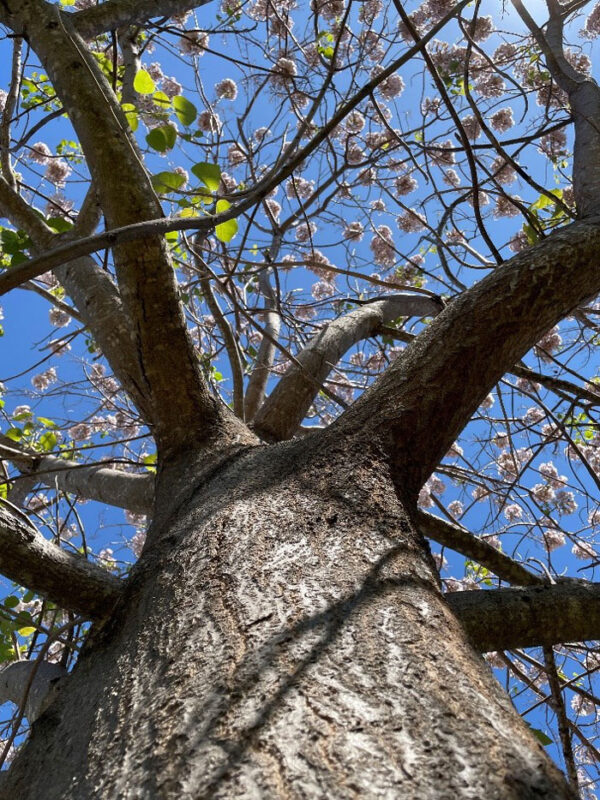
Empress Trees can do fun and amazing tricks! When cut to the ground every one to three years (a technique called “coppicing”), Empress Trees can develop new heart-shaped leaves as big as an elephant’s ear … but no flowers the first year after pruning. (You can do the same thing with Catalpa trees.)
Empress Trees are super-easy to grow! Not being fussy about soil, pH, moisture, or much else except temperatures below -15°F, they will grow just about anywhere … which brings us to the wicked side of the temptress Empress…
Empress Trees are right up there with Johnsongrass (Sorghum halepence), Common Reed (Phragmites australis), Giant Reed (Arundo donax), and Kudzu (Pueraria montana) for being a particularly pernicious pain in the patootie. Basically, these are all botanical bullies (you may prefer “invasive species”) that reproduce and run amuck everywhere, disrupting the local native ecosystems and displacing native species. (Hmmmm … I wonder if humans are considered invasive species; after all, people brought every other invasive species here. Maybe we were the first…? Perhaps that discussion is best kept for another time…)
Remember Star Trek’s “The Trouble with Tribbles?” Well, the Empress Tree not only goes where no man has gone before, but literally, to infinity and beyond! (Sheldon Cooper shudders…) Each flower produces a little hard fruit that looks like a cross between a pecan and a Hershey’s Kiss. The yellowish fruits are actually kind of cute-looking outside, but inside is where the potential evil lurks…about 2,000 seeds in that cute fruit…guessing about 1000+ fruits on a mature tree…I never was good at math, but Sheldon says that comes out to about two million seeds … per tree … every year … Bazinga!
Truth be told, the germination rate for the seeds is extremely low, but even a paltry 1% would still yield the possibility of 20,000 seedlings. I’m guessing that, here in Texas, droughts have likely held rogue Empress Tree seedlings in check. North and east of here, particularly from Tennessee to New England, it has presented some major league ecological challenges. (That’s a polite way of saying, “Houston, we have a problem.”) And who knows … there may be someone out there working on a fruitless Empress Tree at this very moment.
So … Empress Trees are kinda like that elephant, some serious thought should be given before bringing one home.
___________________________________________________________
I need a road trip! Let me know if you’d like me to come and speak to your group sometime. I’m low maintenance, flexible, and you know I like to go just about anywhere. No city too big; no town too small. Just send me an e-mail at stevenchamblee@yahoo.com and we’ll work something out.

